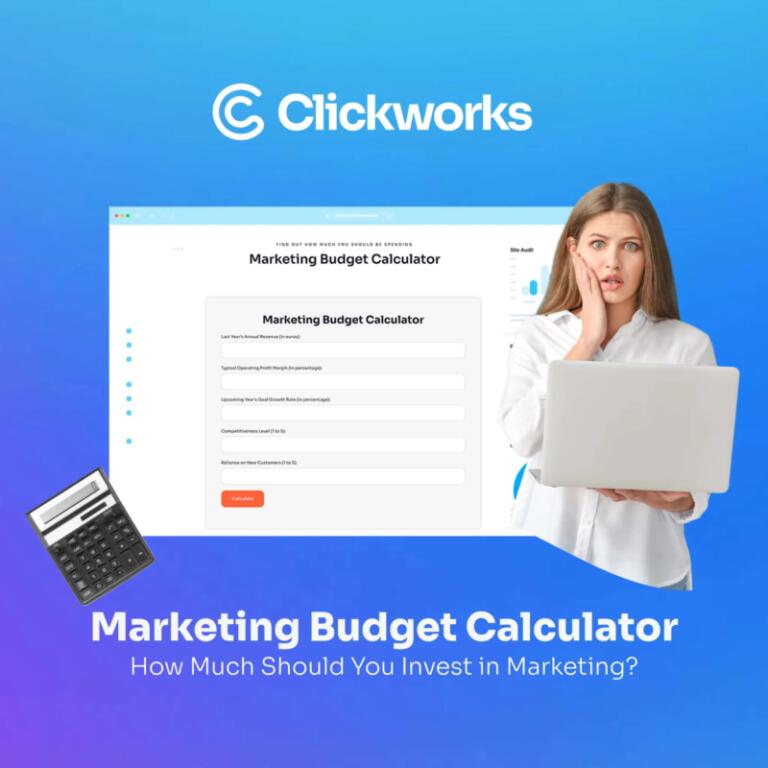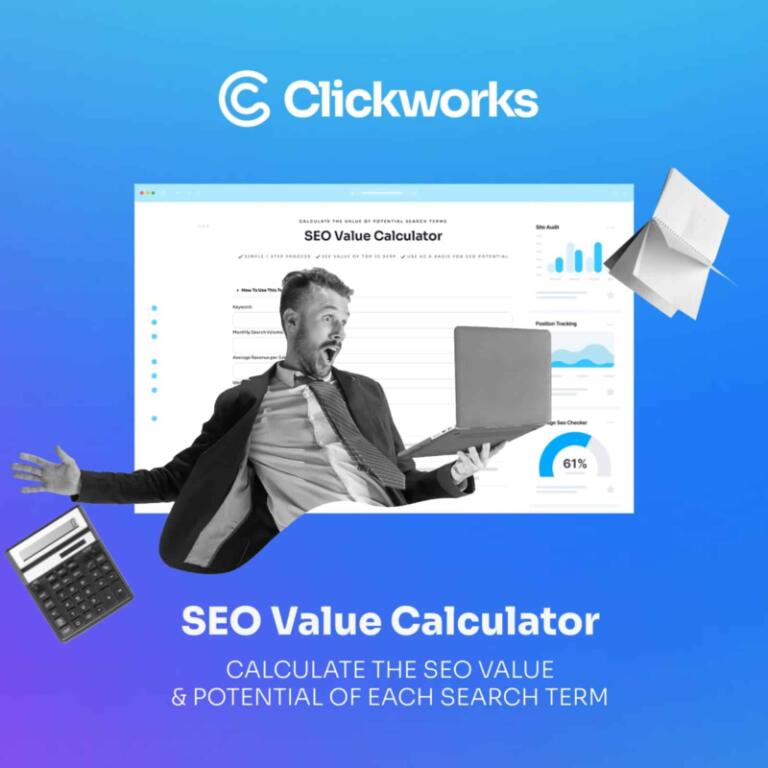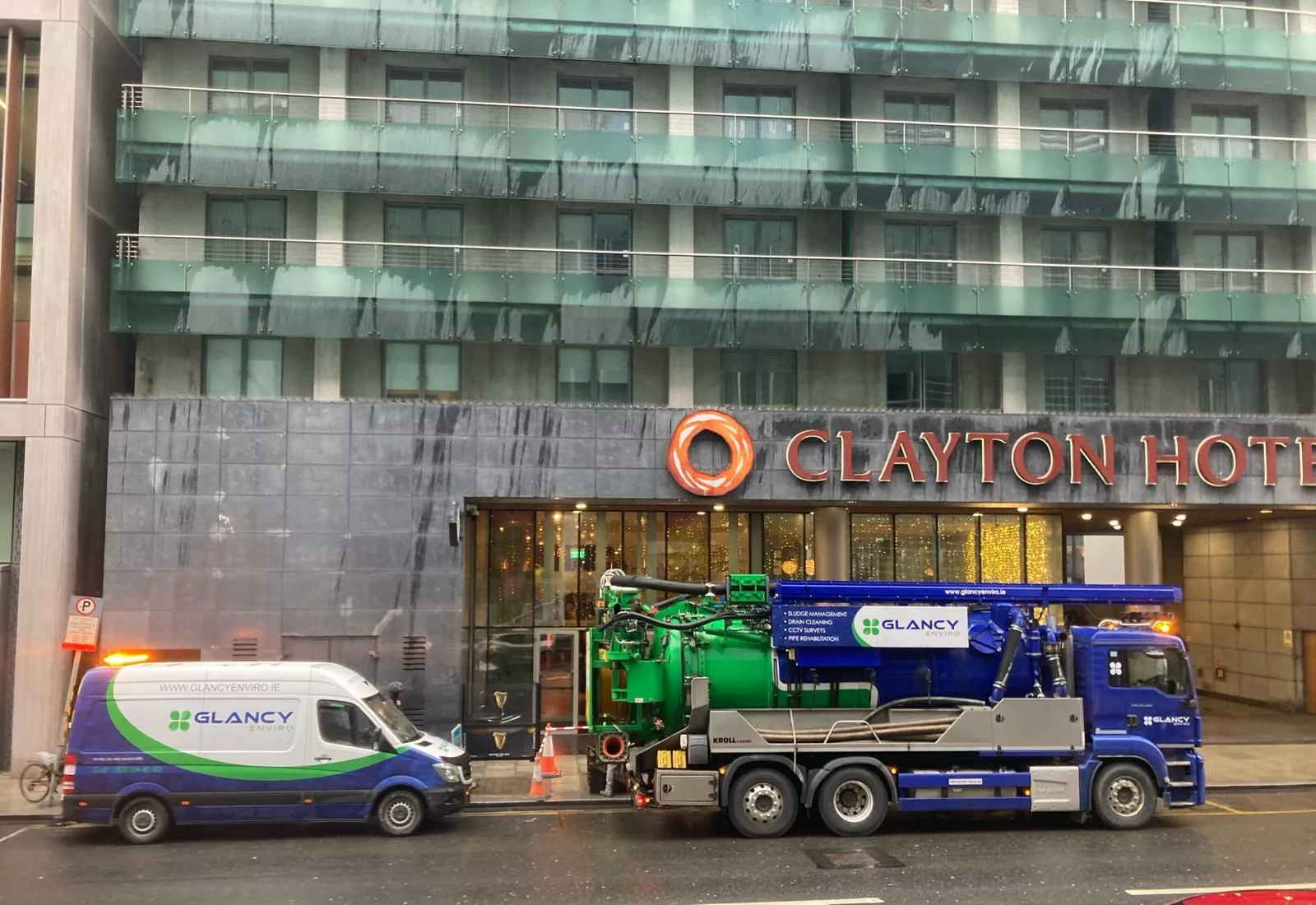One of the most common mistakes we see in SEO is trying to optimize the homepage for every keyword you want to rank for.
This can dramatically reduce your ability to rank for what you want to – AND can even hurt your rankings.
Here are some reasons why you shouldn’t focus on homepage SEO, and several tips for what to do instead:
1. The Business Case For Not Optimizing The Homepage
Successful businesses often offer multiple services and products at some point, even if they don’t when they begin.
When you eventually add those services, your homepage won’t be able to rank for all of them.
Let me give you an example:
Let’s say you start out selling 1 product, blue widgets, so you set up your site to be optimized for that:
This is cool, until your business grows bigger, then later on down the road, you realize your customers want green widgets, red widgets, big widgets, and small widgets.
Then you start selling widget repair services, widget management, widget insurance, and more.
And then as you get bigger, you expand to have more locations. Now you have locations in Chicago, Los Angeles, and London.
But the problem is, your website is just structured to rank for 1 product, so now it doesn’t make sense.
There is no way that Google is going to rank your homepage for:
- Blue widgets
- Red widgets
- Big widgets
- Widget Insurance
- Widget Repair
- Widget Management
- Los Angeles widgets
- Chicago widgets
- London widgets
Your title tag would have to look like this:

That’s not going to work. Plus, Google usually only displays 50-60 characters of your title tag in the search engine results anyway (this is a faked screenshot for demonstration!)
Selecting a specific title tag that benefits your brand is an excellent tactic to increase your branding efforts. You can even increase your click-through rate if your HTML title tag is insightful enough!
The HTML tag should feature your brand name and keywords. It can reinforce brand awareness and serve as an SEO-friendly bonus on its own. Only choose the best descriptors for your brand when coming up with a title tag.
But that’s not the only problem with trying to rank the homepage….
2. Wrecking Your Rankings Because Of Keyword Cannibalization
Keyword cannibalization is when you try to rank two pages for the same terms and topic.
This often happens when you try to rank your homepage and rank a subpage.
Google will see that you have 2 pages with the same topic and get confused about which one should actually rank… and many times end up not ranking either one of them.
Alternatively, it can cause an undesirable page (your home page) to rank ahead of your service page — which actually is about the search query.
It can effectively drag down both rankings in the long term.
Here’s an example of what that looks like:
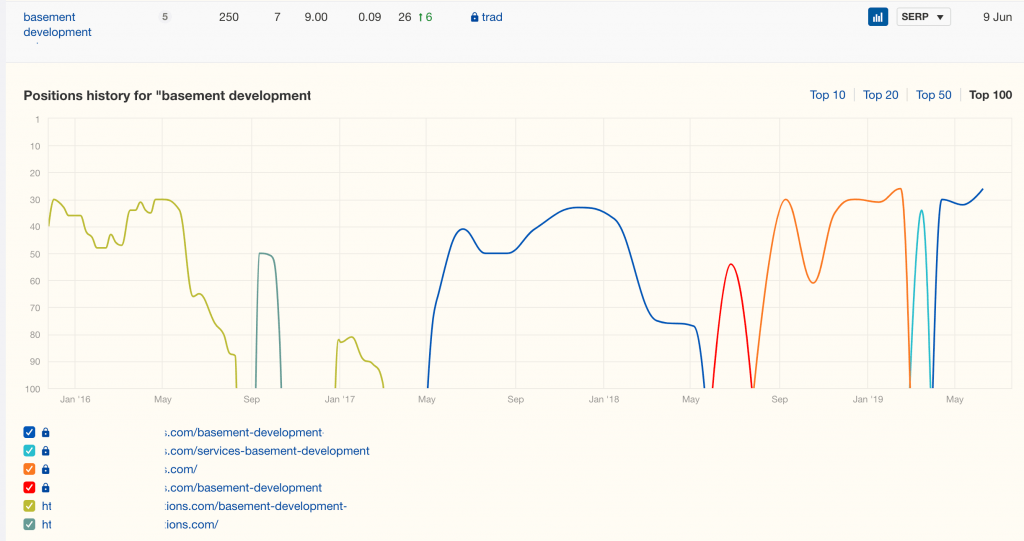
This is a screenshot from Ahrefs (an SEO tracking tool). Each color graph represents a different page on the site.
You can see in this example that one page will start to rank, then Google will drop it and try to rank another one.
This cycle continues and none of the pages rank to their full potential because Google can’t figure out the correct one.
If you have a good number of backlinks on your other pages, then it will be easier to rank your homepage on Google for your brand name.
Use a keyword research tool to generate focus keywords for your on-page SEO.
No matter what’s your objective, keyword stuffing will never help you reach it as Google tends to penalize websites that do this instead.
Here’s what to do if your homepage features a high competition keyword
Let’s say your website involves a keyword-based name, such as ‘Happy Pants”. Both of these are keywords a visitor could possibly use when searching for something other than your website, which makes you face competition from other bands with similar names or simply for websites that utilize these keywords for other purposes.
In this case, your homepage is still your best ally for providing your clients with a stellar end-user experience.
As for another example, let’s take a look at the branded keywords “content marketing” as the focus keywords of a content marketing agency.
Content marketing is a common keyword, and if the agency uses it for its brand name, it might face competition from many sites. If the competition is too steep, you might not even reach a high page on the SERPS, let alone the first one.
On the other hand, using competitive keywords in your domain name can also work in your favor. If your other pages are highly optimized too, then the homepage could rank highly in the SERPs for these competitive keywords, as it obtains a boost from the page rank from your internal pages.
Pro-tip: Avoid keyword stuffing on your homepage. On a second note, avoid keyword stuffing anywhere on your website.
Keyword stuffing happens when a website overloads a webpage with a search keyword several times, often in unnatural patterns, hoping for the term to rank higher in search engines.
Provide your audience with information on your business and start your brand’s storytelling, as part of your digital marketing strategy.
3. Usability: Get The User To The Right Page From The Beginning
When a user finds your website, it would be optimal for them to land on a page that talks specifically about what they were searching for, not a homepage that lists everything.
When users land on a specific page that is exactly what they are looking for – they get right to where they need to go without needing to browse.
On top of that, your website’s search engine optimization is dependent on the correct management of the technical SEO elements that compose it. One of them is the meta description, the appropriate use of headings, and a decreased bounce rate that reflects a swift UX.
4. Conversions On The Homepage
The best way to optimize your page is by following our tried and true SEO best practices, featuring quality content, and using tools such as Google Search Console to quantify your relevant metrics.
On top of that, while this is more of a personal preference, I really like to use our homepage to focus on conversions vs rankings.
To me, our homepage gets hit more and more as our brand grows, and I want the freedom to do whatever I want with it vs. needing to put 2000 words of text on it to try and rank for a certain keyword.
Our homepage now is still very simple and encourages people to sign up. It works.
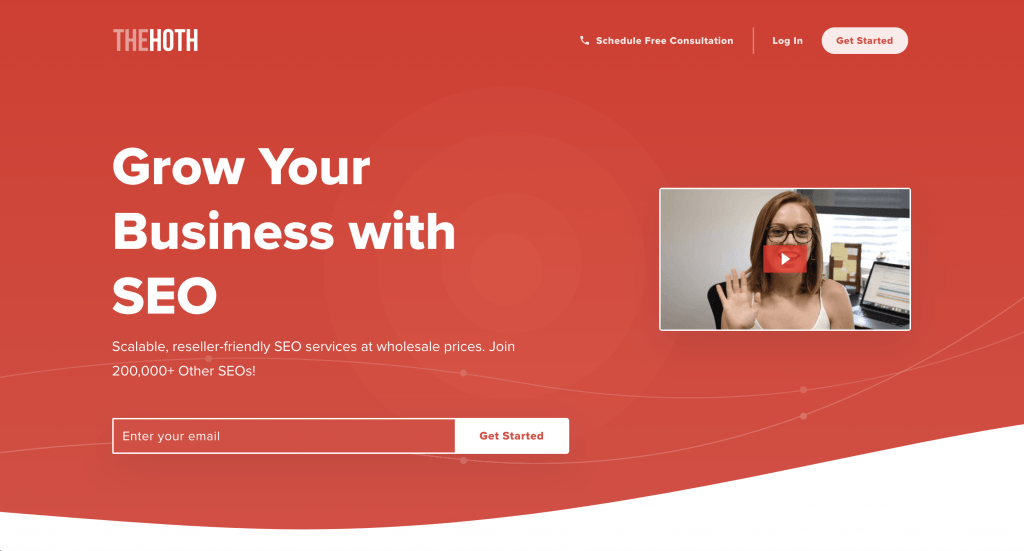
So, with all that said, how do you fix these issues?
What To Do Instead
The fix is pretty simple – just build out separate pages for each specific topic (product, service, category, location) that you want to rank for.
For instance, you would build out a page for each product:
Products
/blue-widgets/
/red-widgets/
/green-widgets/
Service
/widget-insurance/
/widget-repair/
Locations
/widgets-los-angeles/
/widgets-chicago/
..and rank each of these pages for what they are actually about.
Essentially, you need a page on your site for every keyword topic you have in mind. If you don’t – you need to build it!
Now, this doesn’t mean you have to build out a page for every single variation of a keyword you have, Google often will rank 1 page for many variations.
If you need help building out new service pages, check out our copywriting product, HOTH Web Copy, where we craft pages to attract your target customer, explain the features, and drive customers towards a sale.
SEO Strategies for Your Homepage
Some webmasters might still choose to optimize their homepage after following the steps we previously described. If that’s your case, then we’ve come up with some alternative SEO strategies for homepage optimization so you don’t miss out on that valuable SEO juice but also do not cannibalize your other subpages.
While the Google algorithm is kept secret, at Clickworks we’ve studied its behavior and understand the nuances of its constant updates and changes. In short, we know all the tips and tricks to help you optimize your homepage for SEO.
Optimize your homepage content for SEO
To start, the focus of your homepage should be explaining to users and Google what you do in a broad sense. Let’s begin from the top of your homepage.
Your homepage title is the first thing you should optimize. Keep the homepage title within 60 characters or less. Add keywords that represent your website, and never forget to add your brand name. Target keywords for homepage titles are best placed at the beginning.
That can look something like this:

The homepage title is an important part of ranking your brand name. After all, ranking your brand name will make it easier for people to reach your business when searching on Google or any other search engine. Your home page title should say what you do in general terms, but in general, you shouldn’t count on this to rank.
Your sub-pages are going to be what puts you on the map when a searcher enters the term.
As always, avoid keyword stuffing when writing titles. It’s better for SEO to have fewer keywords in a naturally-sounding title than it is to have an awkwardly-sounding title stuffed with pointless keywords.
Your homepage should contain at least 400 words of quality content, give and take depending on your web design. After all, search engines prefer content that helps your audience solve a problem.
Optimize your headers
Headers are important for local SEO, as they provide search engines with information to better understand your content. It also makes your page easier to read for visitors.
One of the best ways to utilize headers to their full potential is by adding some of your main keywords into your headers naturally.
Now, for the fun part. What header size should you use for each section?
Each page should only have one H1 tag, and if it includes some focus keywords, then much better. You can use an H1 header at the top of your page, and it should be relevant both to your branding and the site’s structure.
For the rest of the sections, you can use H2s, and H3’s to create a structured flow of content. H2s function best as section dividers and H3s can be used within these sections as subsection dividers.
Optimize your meta description
An ideal meta description will include the company name at least once and also a brief summary of your company’s services. The more factual and cons, the better, as it provides search engines with a quick overview of the site’s theme.
Yes, visitors do read the meta description from time to time! This commonly happens when a visitor searches a keyword that your homepage ranks highly for and inquires about your business’ services.
The best meta description describes your company in an appealing way. Add in-context keywords to boost its search engine rankings, but as with the homepage title, naturally-sounding sentences work best.
Optimize Image SEO
Humans are visual beings and while the blank space on the homepage can make it easier to skim through the content, it can also be sprinkled with visual content that keeps viewers engaged and excited.
Visuals have the added benefit of reinforcing your branding too, so it’s time to add a couple of images on your homepage to embellish it. On top of that, images can be used as an alert for search engine crawlers to take note of your content.
Choose the right file and size
The file type of the image can affect the way it loads for visitors on the webpage. Select the best file type for each graphic.
Depending on which image format you use, you’ll have a different effect on your homepage.
- JPEG is better for big photos or illustrations, saving up on file size while giving you good color quality.
- PNG is better for logos and transparent backgrounds. They work very well on homepages considering how important blank space is in them.
- SVG can also work for logos, allowing you to resize them without losing quality using CSS.
And finally, if you’re adding moving graphics or animations, use GIFs.
The image size is also important to note: the larger the image, the longer it’ll take to load your website. And we all know what happens to websites that take too long to load, whether it’s the homepage or a subpage!
You can also add captions to your image to create a better user experience and reduce bounce rate. Captions won’t necessarily help SEO directly, but they can keep visitors hooked if they are particularly witty.
Name the file with your focus keyword
Your image file name also has an effect on SEO, as it tells Google what the image is about. You can save your image file with the focus key phrase you’re trying to implement.
The best template to follow is to include your focus keyword at the start of the file name and separate each individual word with a hyphen. Avoid underscores as search engines don’t recognize them. For example, if your business is about jeans, try something like denim-blue-small-size.jpg instead of JEAN1234.jpg
Compress your images
Compressing an image involves minimizing the byte size of an image without degrading its quality. Be careful – compressing it too much will reduce both the file size and the image quality.
Try using image-editing software like Adobe Photoshop to optimize image quality for your homepage. Other useful compression tools are JPEG Mini, Gimp, and Pixlr.
Optimize image alt tags
Don’t forget to add the appropriate alt text that describes the image. Alt text is a bonus for search engines to better understand the content within your homepage and rank it higher. Make sure to keep your alt text as short and descriptive as possible, with your reader in mind, but also include keywords for every image alt tag.
Search crawlers do benefit from the alt description or image alt tag. It also helps internet visitors who have image displays toggled off or in case an image just won’t load due to a bad connection. It tells them a brief description of what the graphic should represent.
Think of it as if it were you landing on your homepage, what would you like to see as descriptive text if the images didn’t load correctly? Write the most accurate description you can.
Add videos
Videos can also be a viable media option to balance the content in your homepage. Video is the next step up from images and can also benefit SEO greatly, though make sure the video file isn’t too large as otherwise, it could increase your homepage’s bounce rate.
Add testimonials
Your homepage can be a great place to add testimonials, in case you’re not adding a dedicated subpage for them in your site. It can also be a good place to add case studies directly linked to your blog.
Testimonials can include reviews from past customers or social proof that reinforce the trust in your brand. Possible customers will always refer to reviews before making any purchase, no matter how impulse-driven it is.
Many websites include the logos of the companies they’ve worked with and an accompanying testimonial.
Social proof is what provides your homepage with enough credibility to sway your audience into making purchases. It reinforces brand trust, something that will permeate their opinions on the other pages of your site.
That’s why building social proof on the homepage is essential. Since it comes from customers and past clients, it boosts credibility, increases relevance, and answers customer questions from the get-go.
A fashionable and creative way to add social proof is also including a logo of a company that has worked with your service and their testimonial alongside. The text featured in the testimonial can help your SEO while simultaneously letting your audience know that other customers have been satisfied with your service.
In short, it never hurts to have a couple of testimonials here and there at the bottom of your homepage!
Pro-tip: Combine images with concise, brief amounts of the surrounding text. This creates more text that you can use for SEO and sprinkling target keywords, reinforce your branding and use up the white space created by the image.
You can also add social media links below the testimonials to serve as a cherry on top for those interested in following your brand on social.
Optimize for mobile
70% of web traffic is performed through mobile phones, and 80% of the top-ranked websites happen to be mobile-friendly.
With those statistics in mind, it’s safe to say that the mobile user experience on your homepage is important. Google introduced the mobile-first index to rank mobile websites differently. Nonetheless, both desktop and mobile sites have the same SEO traits for titles, images, meta descriptions, and headers.
Ensure that your mobile website has the exact same content as your desktop website, otherwise, this could confuse Google’s algorithm.
When on mobile devices, site visitors will most likely scroll down more than anything. Rare is the visitor who stays staring at the homepage’s top, no matter how beautiful the logo or how inspiring the CTA is at the top.
Most of them will scroll down until they reach the testimonials area, so you should focus on adding the most important and eye-grabbing content at the bottom instead of the top.
You can practice stepping into your audience’s mobile shoes by looking up any site you know and analyzing their homepage structure, or that of any of the other pages they are trying to optimize.
For example, take a look at this blog post by Clickworks:
How To Optimize For Featured Snippets And Rank In Position Zero
If you read the article, you’ll notice that most of the screenshots and main takeaways are located down instead of up.
Page speed is crucial for mobile optimization. People tend to click away when a website takes too long to load up, no matter how good the content in it.
The ideal page speed should be less than three seconds. To learn more on how to optimize your homepage for page speed, check our Free Pagespeed Checker.
Optimize CTAs on your homepage
CTAs are simple, yet powerful elements of your site when done properly. The best CTA is linear, clear, and usually not more than two words long.
The ideal CTA includes words that fit within your company’s services. An SEO consulting company, for example, would love to slap a “Schedule free call” CTA on a red button on their homepage.
CTAs are dependent on your company’s service. You can use them to motivate visitors to contact you, subscribe to your email newsletter, view your service’s pricing plans or fill out an information form.
For example: Read more, Get Started, Start Free Trial.
One thing all CTAs should have in common is that they should induce a sense of urgency in your audience.
Pass Link Equity From Your Homepage
Your home page is often one of the most powerful pages on your site – so you don’t want to waste it.
Pass the link equity to your most important pages by linking to them.
Internal linking is an essential part of SEO and shouldn’t be dismissed when doing homepage SEO. We recommend adding them on the footer of your homepage without spreading them too much above as they could look too spammy or create clutter. While powerful tools to increase search results, links aren’t exactly the most visually appealing!
Links in the footer could serve as a secondary menu for visitors to quickly get to know your company’s location or other site pages. Done right, it’ll boost traffic to the most important subpages of your website.
Build quality high-quality internal links with CTAs (calls to action) from your home page to each of your service pages.
You’ll want to leverage that link power from your home page at the same time that you’re building external links to your inner pages.
Conclusion
There are lots of reasons to NOT rank your homepage – but that doesn’t mean you can’t rank. All you need to do is build up specific pages for each topic.
On the other hand, your homepage is a haven for your visitors, a place where you can strategically target several keywords to establish your brand in the SERPs while also providing your visitors with answers to their questions. Never forget to do the basic work and also optimize it, if not exactly focusing on it thoroughly.
Want some help building out pages for each of your services or areas? You’re going to love HOTH Web Copy.
Schedule a call with one of our consultants to learn more about our SEO services and how to use SEO & PPC to rank your site’s pages on the results page.


